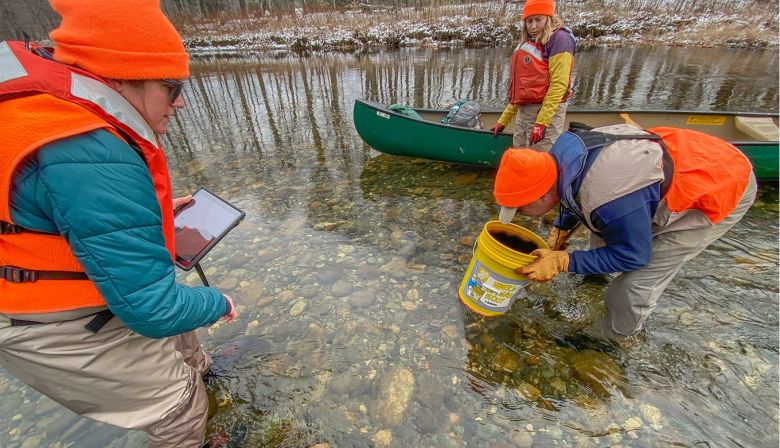
Subscribe & stay up-to-date with ASF

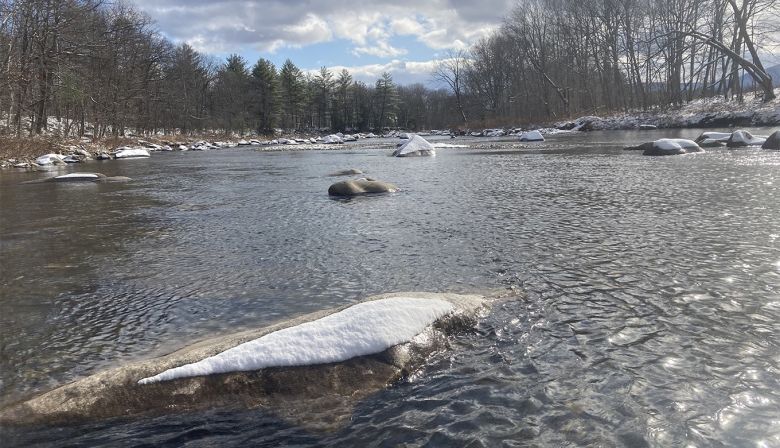
Something went better at sea this winter and spring. It seems more salmon survived, perhaps a combination of improved environmental conditions and a reduced total harvest at Greenland thanks to the conservation agreement between ASF, the North Atlantic Salmon Fund, and Greenland commercial fishermen.
DFO, U.S., and Quebec scientists will now begin the process of collecting data from trap nets and counting facilities, analyzing the numbers, and estimating total returns. That will take some time, but the true test of the strength of this year’s returns comes five years from now, when the first of the eggs laid in rivers this month and last will return from the sea as adults.
On the Sandy River, a tributary of the Kennebec in Maine, the redd count was also substantial this year, considering there were only 51 salmon trapped and trucked from an impassable dam lower in the system.
So how do these fish find their way back home after at least a full winter spent in the North Atlantic?
Their partially driven by magnetic fields and an imprinted smell of their home river. Salmon have such strong receptors that individuals can detect a single drop of certain chemical in water equivalent to the volume of 10-Olympic sized swimming pools
Three unique life strategies developed over thousands of years act as an evolutionary safeguard for the species.
Multi-sea winter fish that spend two or more winters in the rich waters off west Greenland are like a Maritimer heading for Alberta, in better days perhaps, to work far from home for big reward.
Grilse, adult salmon that spend a single winter at sea, not travelling all the way to Greenland, are like the kid from Cape Breton moving to Halifax for a time – more resources, but a shorter distance to home.
The third life strategy, used by so-called precocious parr, is comparable to never leaving your home town. These tiny males but all their energy into becoming sexually mature, not growing large. They stay put in the stream where they were born and when larger adults are in the act, these sneaky parr dart in and add their genetic material to the mix.
It’s believed that precocious parr can fertilize up to 30 per cent of all eggs in some rivers, proof that life takes all kinds.

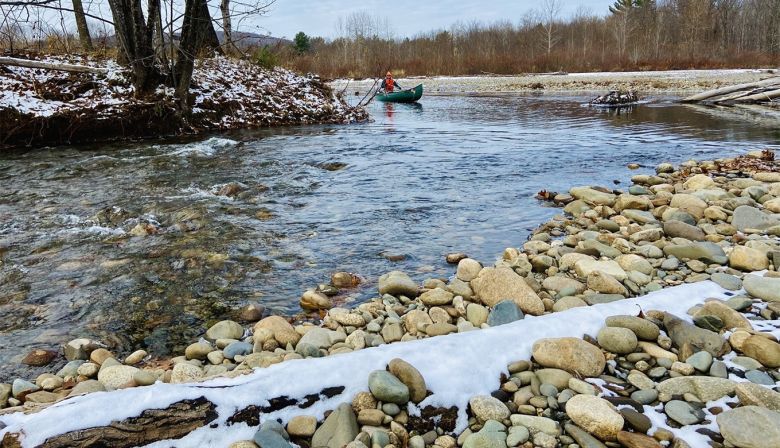
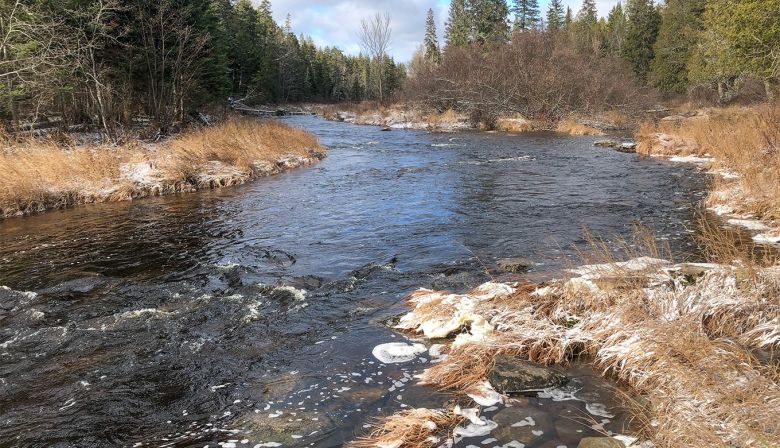
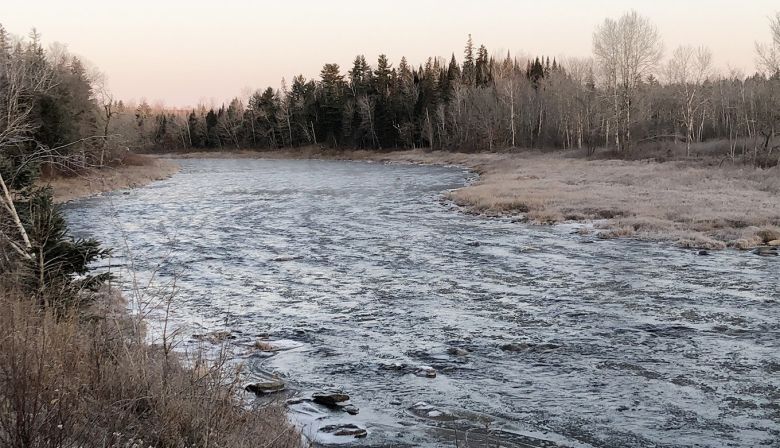
At the end of October, a team from Rocky Brook Camp did a count on both streams and posted some impressive numbers. On Rocky Brook, 218 redds were counted, the highest figure since 2011, and on Clearwater there were 112, the best since 2008.
St. John River
The final 2020 numbers are in for salmon returning to the Mactaquac Dam, and sadly the spiral to anthropogenic extirpation on this once great river continues.
Their were 146 large salmon this year compared to 192 in 2019. For grilse, there 346 to Oct. 31, vs 507 to the same date in 2019.
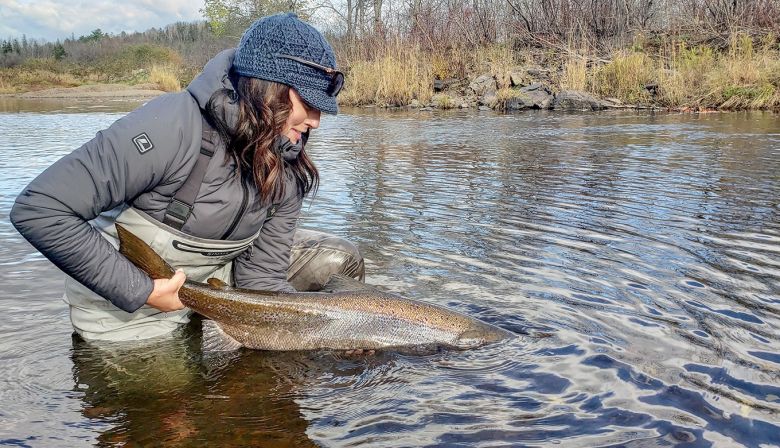
The Atlantic salmon angling season in Nova Scotia closed at sundown on Halloween. Salmon culture is strong in the Bluenose province, especially in northern Nova Scotia, along the Northumberland Strait and in Cape Breton. In both regions there are several unsung, smaller rivers, that reward the patient angler with large fish every year.

Don Ivany, ASF’s Director of Programs in Newfoundland and Labrador, and Jesse Noel from Wood Engineering and Environmental Consultants, helped to install a two step “beaver baffler” recently on Deadwater Brook, a major spawning tributary located in the Humber River watershed. This is the second beaver baffler installed on this stream this fall. The beaver bafflers are designed to let migrating salmon bypass beaver dams without having to notch or remove them. This project is being led by the World Wildlife Federation in partnership with ASF, SPAWN, and other volunteers.
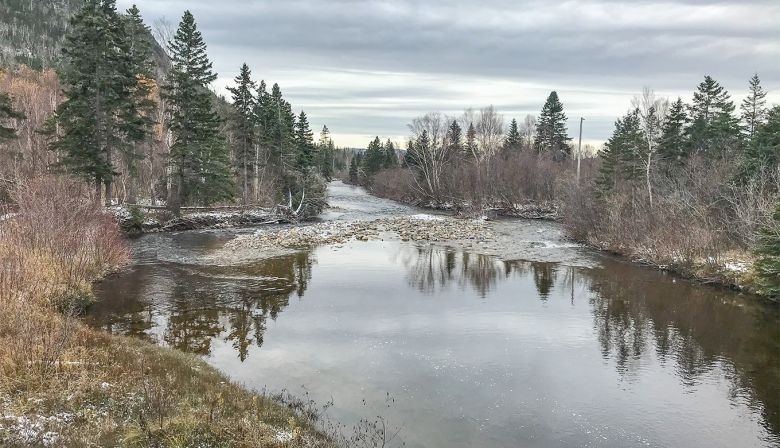
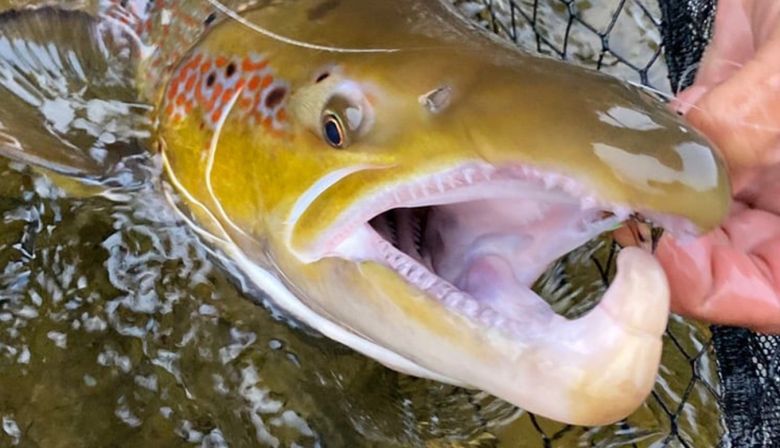
Charles Cusson, ASF’s Director of Programs in Quebec writes:
Preliminary numbers indicate the 2020 season to be 3rd best since 1984 and best since 2015 in regard to fish landings. To September 30th for the season, 2,503 salmon were reported released and 5 grilse harvested for a total of 2,508.
The 2011 season resulted in all time high of 2,713 fish being landed, 2,615 salmon released, 43 salmon and 55 grilse harvested.
Pendant la saison qui s’est terminée le 30 septembre dernier, les pêcheurs sportifs ont déclaré 2,508 prises comprenant 2 503 saumons remis à l’eau et la récolte de 5 madeleineaux.
Au fait, la saison 2020 se classe au 3e rang depuis 1984 et la plus productive depuis 2015 au niveau des prises.
Le meilleur rendement a eu lieu en 2011 lorsque 2,713 prises fut déclarées comprenant 2,615 saumons remis a l’eau et la récolte de 43 saumons et 55 madeleineaux.
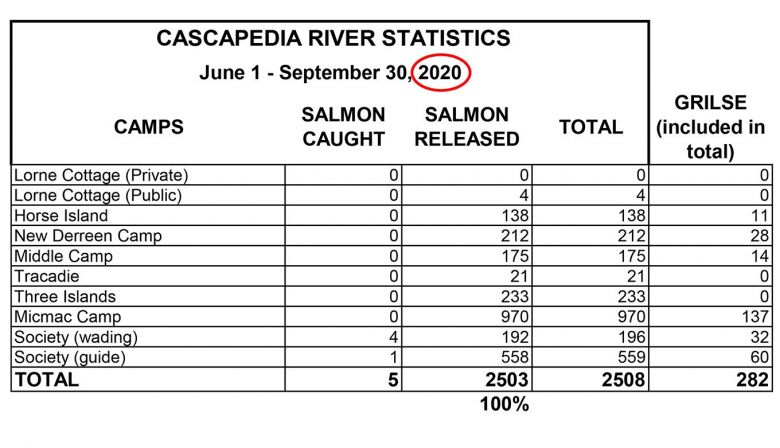

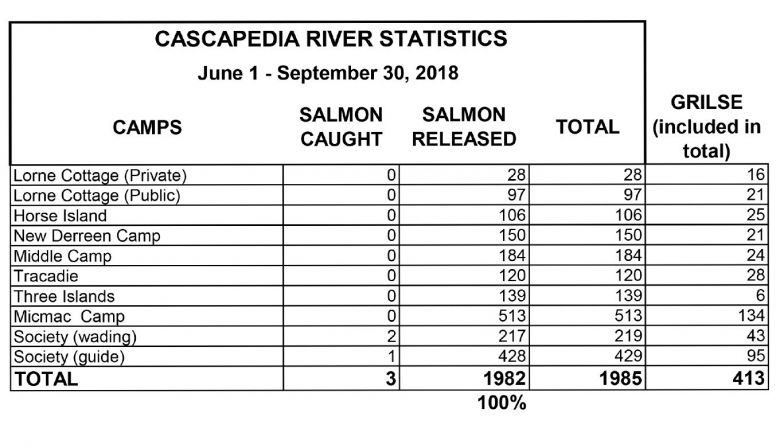
In the end we will need to have a greater degree of confidence that the Atlantic salmon themselves know what they are doing, and will be the stronger for it in 2021.